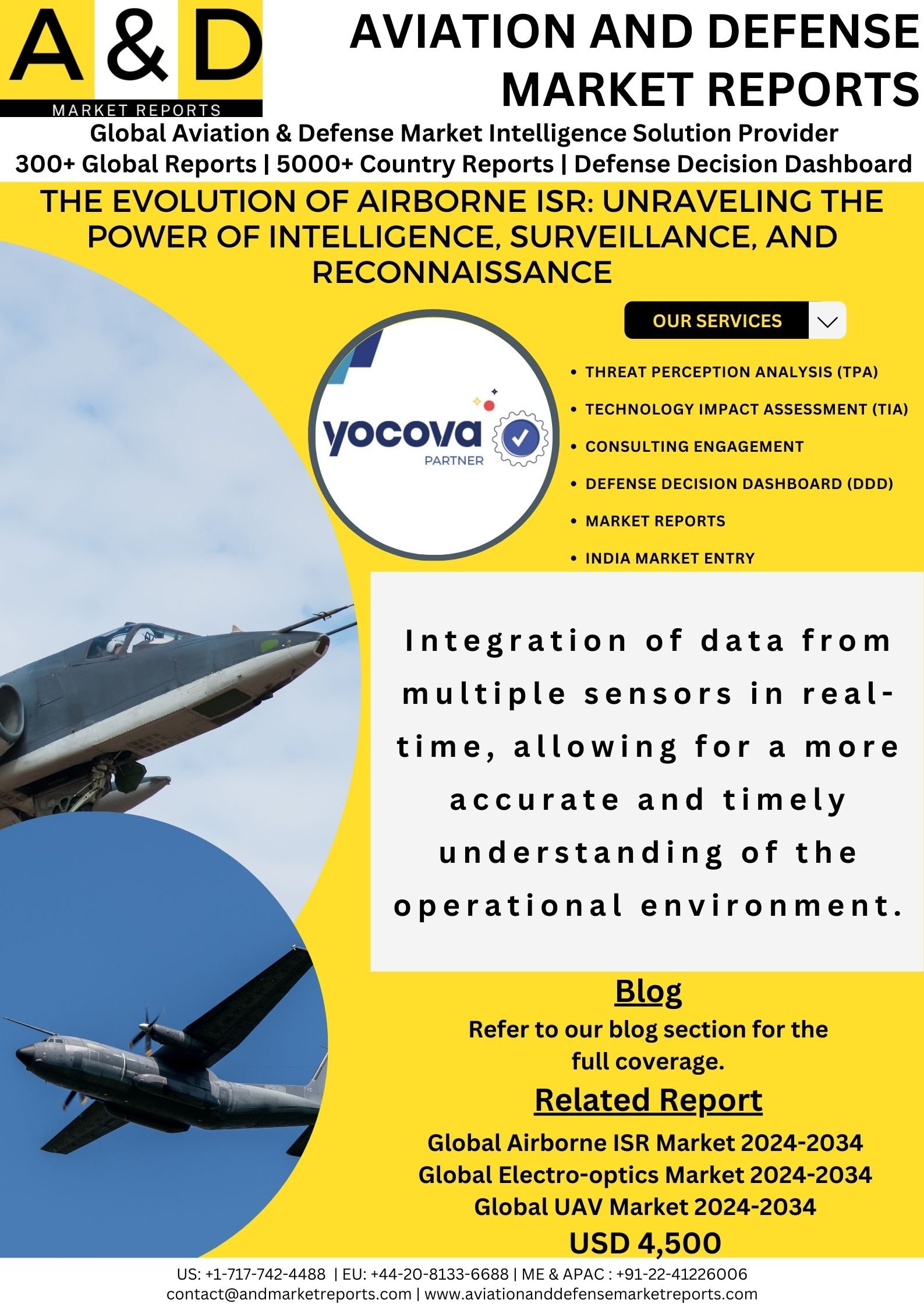Airborne ISR, or Intelligence, Surveillance, and Reconnaissance, refers to the use of aircraft and other aerial platforms to gather information about an area or target. This information can be used for a variety of purposes, including military operations, border security, disaster relief, and environmental monitoring.
There are many different types of airborne ISR platforms, each with its strengths and weaknesses. Some of the most common platforms include:
Manned aircraft: These include fixed-wing aircraft like jets and turboprops, as well as helicopters. Manned aircraft offer the advantage of long-range and endurance, as well as the ability to carry a variety of sensors and equipment. However, they can be expensive to operate and are vulnerable to enemy fire.
Unmanned aerial vehicles (UAVs): Also known as drones, UAVs are becoming increasingly popular for ISR missions. They are much cheaper to operate than manned aircraft and can be much smaller and more agile, making them ideal for covert operations. However, they have limited range and endurance, and their sensors are typically not as powerful as those on manned aircraft.
Satellites: Satellites offer a unique perspective on the Earth, providing a wide-area view that is not possible from any other platform. However, they are very expensive to launch and maintain, and their sensors are not as good at resolving small details as those on other platforms.
Capabilities of Airborne ISR
Surveillance and Target Acquisition:
Airborne ISR platforms are equipped with a variety of sensors, including electro-optical/infrared (EO/IR) cameras, synthetic aperture radar (SAR), and signals intelligence (SIGINT) systems. These sensors enable real-time surveillance and target acquisition, allowing operators to monitor vast areas and identify potential threats on the ground.
Communication Interception and Electronic Warfare:
In an era where communication plays a central role in military and geopolitical activities, airborne ISR platforms are equipped to intercept and analyze communication signals. This capability, combined with electronic warfare systems, enhances the understanding of adversary intentions and capabilities.
Strategic Reconnaissance:
High-altitude reconnaissance aircraft and UAVs excel in strategic reconnaissance, providing a comprehensive view of large geographic areas. This capability is essential for monitoring borders, tracking military movements, and assessing the overall security landscape.
Persistent Surveillance:
One of the key advantages of airborne ISR is the ability to maintain persistent surveillance over an area of interest. Drones, in particular, can loiter for extended periods, providing continuous intelligence updates and monitoring dynamic situations.
Battlefield Management:
Airborne ISR platforms play a critical role in supporting battlefield management and decision-making. The real-time information they provide allows military commanders to make informed decisions, adjust strategies, and respond rapidly to changing situations on the ground.
Significance in Modern Warfare
The use of airborne ISR, especially unmanned platforms, significantly reduces the risk to human personnel. In environments where traditional reconnaissance might be dangerous or logistically challenging, drones can operate autonomously or be remotely piloted, minimizing the threat to human life.
Adapting to Asymmetric Threats:
Modern conflicts often involve asymmetric threats, where conventional military forces face non-state actors or unconventional tactics. Airborne ISR platforms, with their agility and versatility, are well-suited to adapt to these dynamic and unpredictable situations, providing a crucial advantage in the face of evolving threats.
Counterterrorism Operations:
Airborne ISR has played a crucial role in counterterrorism efforts globally. Drones, in particular, have been instrumental in tracking and targeting high-value individuals, disrupting terrorist networks, and preventing potential threats.
Border Security and Maritime Surveillance:
Monitoring borders and maritime domains is a challenging task that requires extensive coverage. Airborne ISR platforms offer a cost-effective solution to patrol and surveil vast expanses, detecting illegal activities such as smuggling, human trafficking, or incursions.
Advancements
Sensor Technology:
Advancements in sensor technologies have significantly enhanced the capabilities of airborne ISR platforms. Electro-optical/infrared (EO/IR) cameras, synthetic aperture radar (SAR), hyperspectral imaging, and signals intelligence (SIGINT) systems have become more sophisticated and capable. High-resolution imagery, improved target detection, and the ability to operate in adverse weather conditions contribute to a more comprehensive and accurate intelligence-gathering process.
Artificial Intelligence (AI) and Machine Learning:
The incorporation of artificial intelligence and machine learning into airborne ISR operations marks a transformative leap in data analysis and interpretation. These technologies enable automated processing of vast amounts of data, improving the speed and accuracy of intelligence assessments. AI algorithms can identify patterns, anomalies, and potential threats, allowing human operators to focus on critical decision-making rather than sorting through massive datasets.
Machine learning also facilitates predictive analytics, helping anticipate adversary movements and behaviors based on historical data, thereby enhancing the proactive nature of airborne ISR.
Miniaturization of sensors has also played a crucial role, allowing them to be integrated into smaller UAVs, and providing tactical ISR capabilities for both military and civilian applications.
Swarm Technology:
The concept of swarm technology, where multiple UAVs operate collaboratively in a coordinated manner, has gained traction in airborne ISR. Swarms can cover larger areas more efficiently, share information in real time, and adapt to dynamic and complex environments. This advancement not only increases the scalability of airborne ISR but also enhances resilience and survivability in contested environments.
Stealth and Low Observable Technologies:
To operate effectively in contested airspace, advancements in stealth and low-observable technologies have become crucial for airborne ISR platforms. These technologies reduce the radar cross-section and infrared signatures of aircraft, making them less detectable and vulnerable to enemy threats. This is particularly important for ISR missions in hostile environments, where avoiding detection is essential for mission success.
Conclusion
As technology continues to advance, the future of airborne ISR holds immense innovation potential, shaping the way nations safeguard their interests in an increasingly complex and interconnected world.
Recent work: –
- The Evolution Of Warfare: Exploring The Impact And Controversies Of Loitering Munitions
- Unleashing Power: A Deep Dive Into Tank Ammunition
- Mastering The Depths: The Art And Science Of Anti Submarine Warfare
- Revolutionizing Defense: The Impact Of Additive Manufacturing On Military Capabilities
- Unveiling The Power Of Infantry Fighting Vehicles: A Deep Dive Into Modern Warfare
